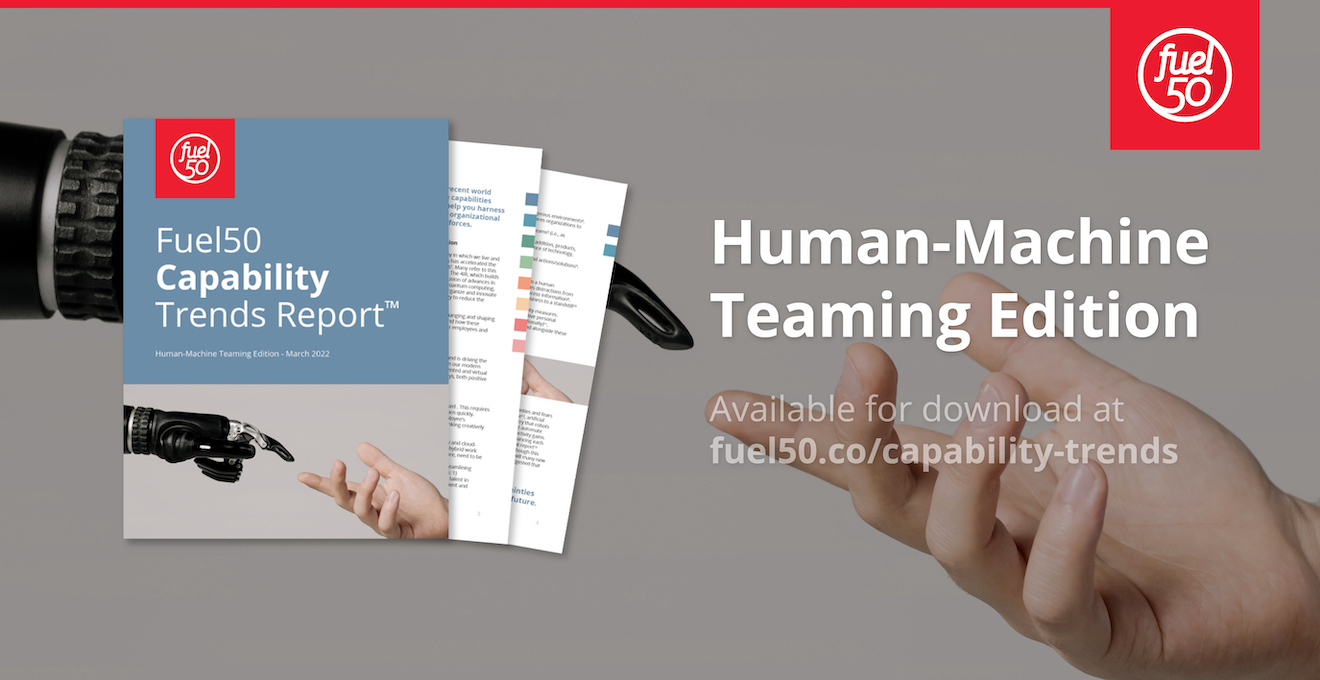The Covid-19 pandemic has fundamentally changed the way we live and work. Organizations have had to restructure, reorganize, and innovate to adapt to a post-pandemic environment. Technology has played a vital role in this shift, allowing organizations to continue operating in a way that keeps their employees and customers safe.
It is important to understand how these technologies are affecting organizations and recognize the power of human-machine teaming to remain competitive, profitable and thriving. Organizations must also determine how to equip and empower employees to effectively navigate these changes.
In this report, we identify 27 of our trending capabilities associated with human-machine teaming.
Advances in technology bring benefits and opportunities, but for many, it brings uncertainties and fears around job losses and an unknown future.
Human-Machine Teaming
According to a Harvard Business Review article, organizations that automate their operations mainly to reduce their workforce numbers will see only short-term productivity gains. Rather, when humans and smart machines work together (human-machine teaming), enhancing each other’s strengths, the biggest performance gains are seen.
This Fuel50 Capability Trends Report explores recent world events and how those are informing crucial employee capabilities required in the workplace. This report is designed to help you harness the latest global capability trends to ensure that your organizational talent strategy is aligned to the current driving global forces.
Discover the latest capability trends from across the globe.
- What has been happening in the world? The Fourth Industrial Revolution
- How is technology impacting the world of work?
- The importance of amplifying the right capabilities to minimize or embrace these world events
The capabilities and specialist skills highlighted in this report need to be embedded into the following three levels of workforce architecture: Individual, Leadership, and Organizational. We have also included some reflection questions to help you evaluate the importance of each capability for your organization.
Enjoy reading! We look forward to sharing more research and insights with you.
Written by Fuel50’s Workforce Architect team
Contributors: Natasha Copley
Fuel50’s dedicated team of Workforce Architects and Industrial and Organizational Psychologists feed the Fuel50 Talent Ontology, train our ethical AI with Diversity, Equity, and Inclusion design principles at heart, and support best-in-class organizations using Fuel50 to transform and future-proof their talent strategy and workforce architecture.







